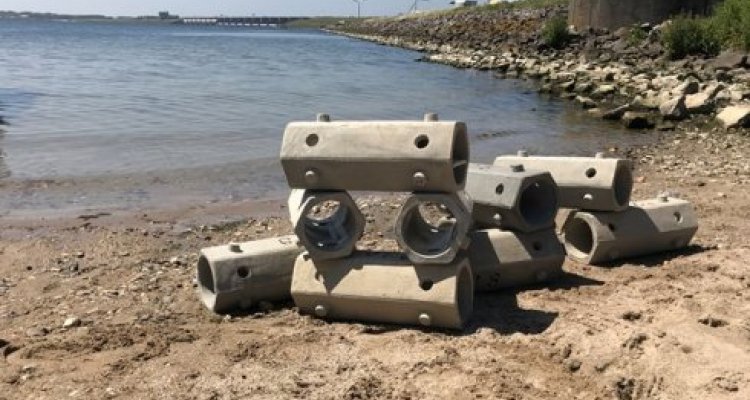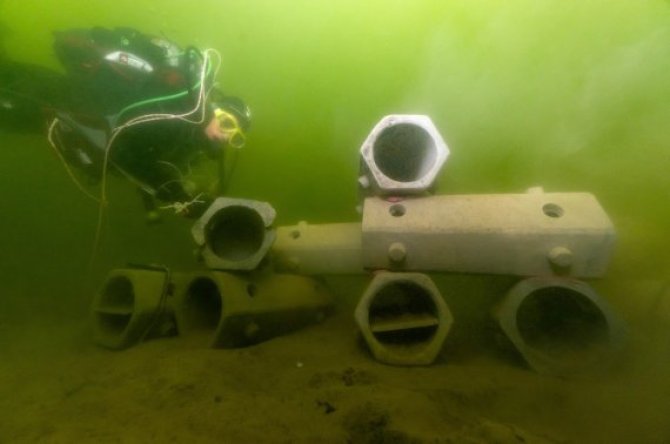
Showcase
Fish hotels provide shelter for small marine animals
Up until early last century, mussel beds and oyster reefs in the North Sea were a paradise for fish, marine mammals and migratory birds, but overfishing has since turned much of the seabed into a barren sandy plain. Eight fish hotels will offer small sea creatures a place to shelter again.
Soil life in the North Sea forms an important part of its biodiversity. Shellfish filter the seawater and offer fish a place to hide or lay their eggs, while birds are attracted to the small fish. “Over the past century, overfishing, pollution and diseases have resulted in a loss of biodiversity and habitat in the North Sea,” says Associate Professor of Molecular Marine Ecology Reindert Nijland. “We can restore this situation by creating new habitat in the water. To this end, the Marine Animal Ecology chair group and the start-up ReefSystems have sunk eight fish hotels to the seafloor.”
Lego bricks
One of the hotels lies at the bottom of of the Haringvliet inlet, two have been placed in the open sea, and fishy hotel guests are also welcome in IJmuiden and the Moselhaven and Oosterdok harbours in Amsterdam. Nijland: “The hotels were designed by the young designer Maxim Robbe Dijkstra and comprise hollow concrete pipes reinforced with fibreglass. They somewhat resemble Lego bricks that you can stack on top of each other, but these are half a metre long. Shellfish and plants can easily attach themselves to the rough exterior and fish and crabs can browse on these and find shelter in the artificial reef.”
Over the next few years, researchers of the Marine Animal Ecology chair group will monitor the fish hotels to see if the biodiversity in the vicinity actually increases. They can determine this very precisely by analysing DNA traces. “Fish shed scales and gill cells, and their faeces also end up in the water. We can identify these DNA traces very accurately in water samples. We remove the DNA from the water and then analyse the DNA sequence in a MinION DNA sequencer in just a few steps. After only a few hours we can see which guests have checked into the hotel. In the future we will have a device that autonomously collects water samples on the seabed, and I will be able to view the results on my phone.”
Hotels fully booked
The researchers see that the hotels are already fully booked: the Haringvliet hotel is located in fresh water close to the Haringvliet locks and is a haven for migratory fish such as eel, grouper and pike. DNA analyses reveal that many round gobies also use the hotel. The two fish hotels at sea are located in salt water and are already densely populated with oysters, plants and sponges. These hotels also attract other sea creatures such as crabs “We only recently sunk the hotels in IJmuiden and the Moselhaven and Oosterdok harbours. We will be keeping a close eye on which guests check in there in the coming years. We are interested in what differences we will see between the different locations. For example, the water in IJmuiden is salty, while the water in Amsterdam is brackish, i.e. less salty.”

The project may be followed up on a larger scale worldwide and the Marine Animal Ecology chair group has already introduced fish hotels in Kenya. Nijland: “The fish hotels help to recover some of the biodiversity in the water. It is important to identify exactly how this biodiversity is affected, so that governments and policy makers can use this information to establish which policies are most successful. If we can support the marine ecosystem and increase biodiversity, it will be more resilient to new threats such as climate change.”